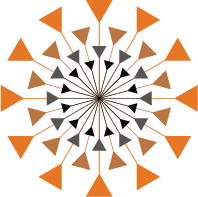Generative models of images should take into account transformations of geometry and reflectance. Then, they can provide explanations of images that are factorized into intrinsic properties that are useful for subsequent tasks, such as object classification. It was previously shown how images and objects within images could be described as compositions of regions called structural elements or "stels". In this way, transformations of the reflectance and illumination of object parts could be accounted for using a hidden variable that is used to "paint" the same stel differently in different images. For example, the stel corresponding to the petals of a flower can be red in one image and yellow in another. Previous stel models have used a fixed number of stels per image and per image class. Here, we introduce a Bayesian stel model, the colour-invariant admixture (CIA) model, which can infer different numbers of stels for different object types, as appropriate. Results on Caltech101 images show that this method is capable of automatically selecting a number of stels that reflects the complexity of the object class and that these stels are useful for object recognition.
@inbook{chua2012painting,
year = {2012},
author = {Chua, Jeroen and Givoni, Inmar and Adams, Ryan P. and Frey, Brendan},
title = {Bayesian Painting by Numbers: Flexible Priors for Colour-Invariant Object Recognition},
booktitle = {Machine Learning for Computer Vision},
series = {Studies in Computational Intelligence},
publisher = {Springer},
address = {Berlin},
keywords = {computer vision}
}
